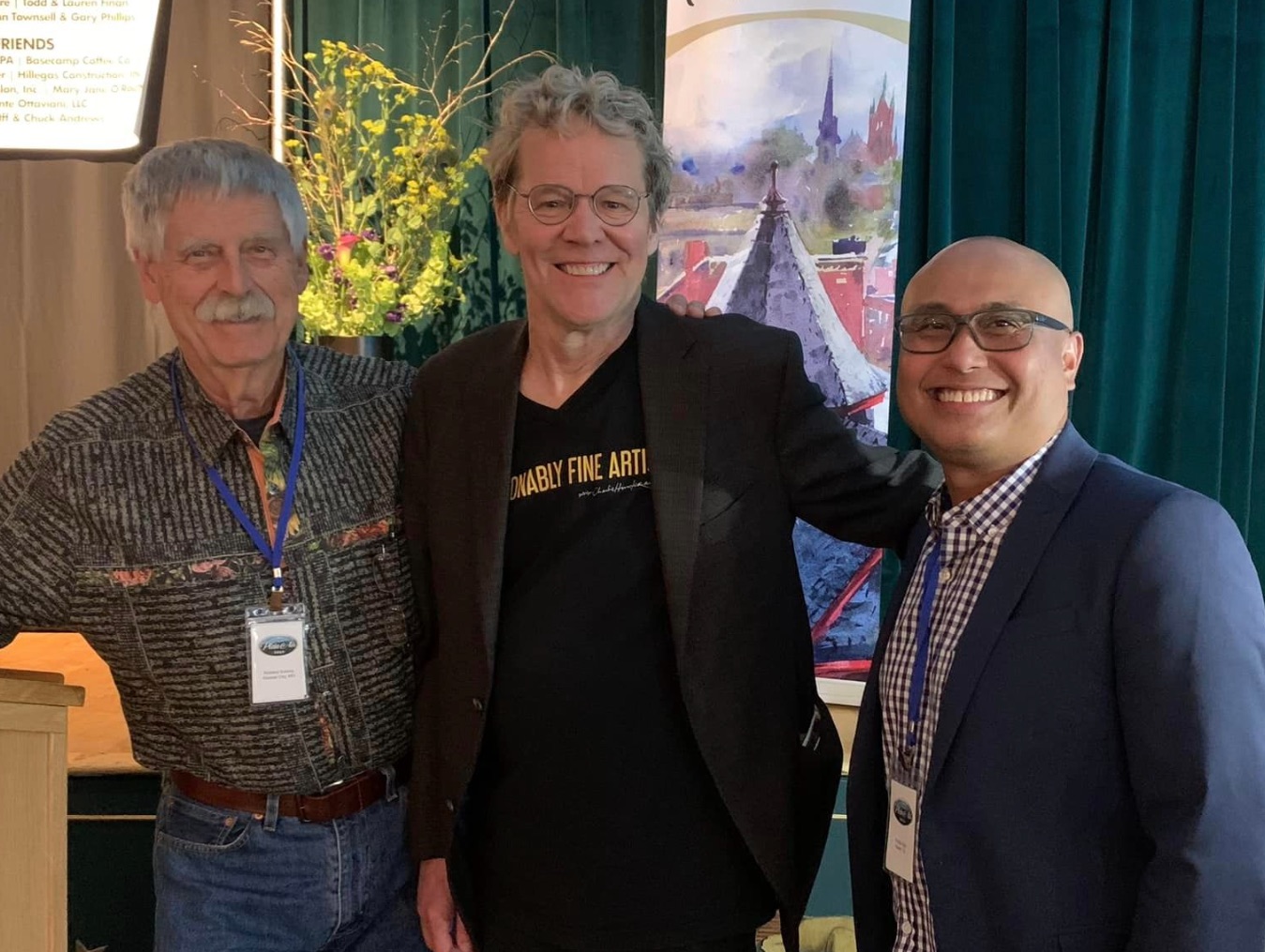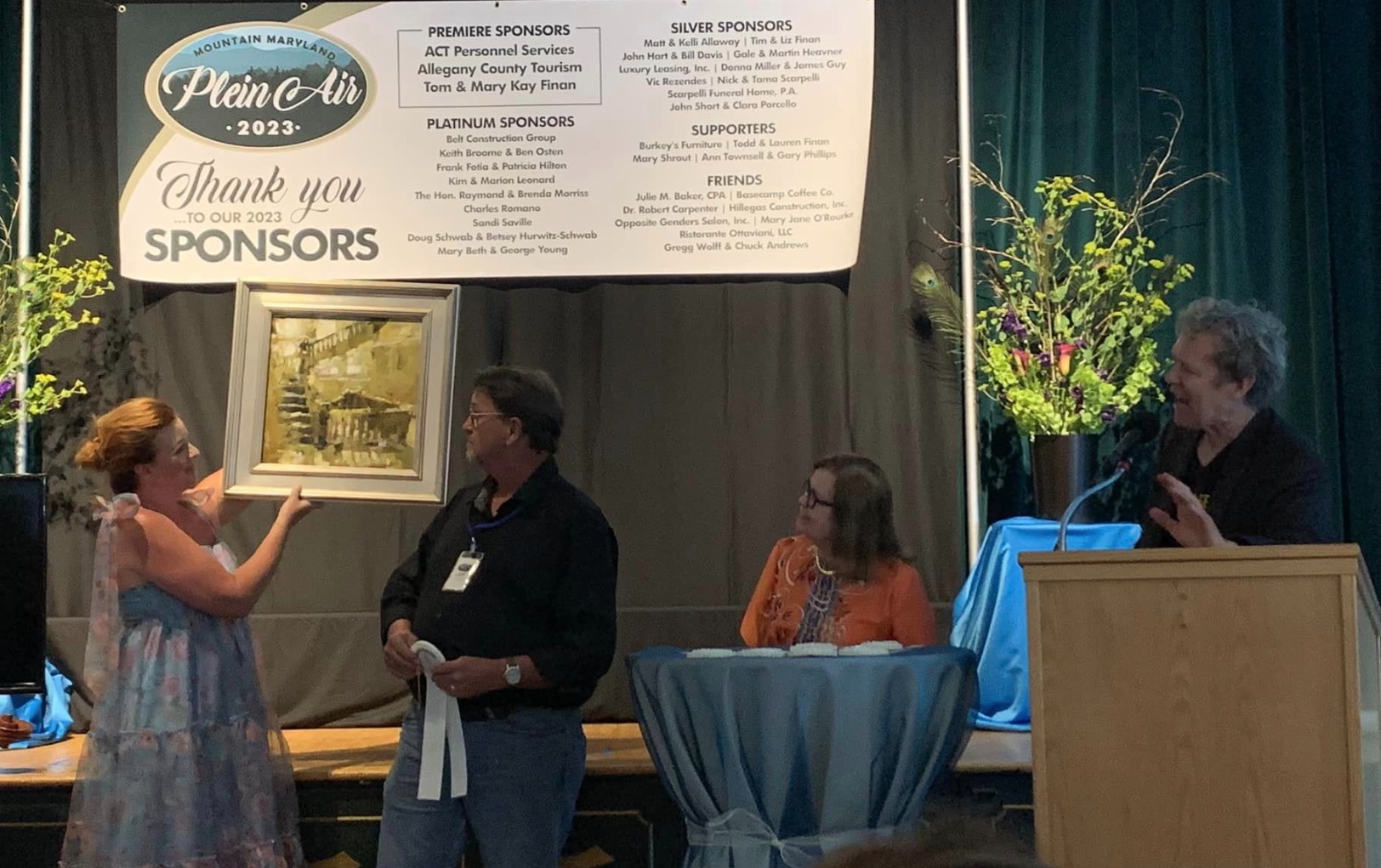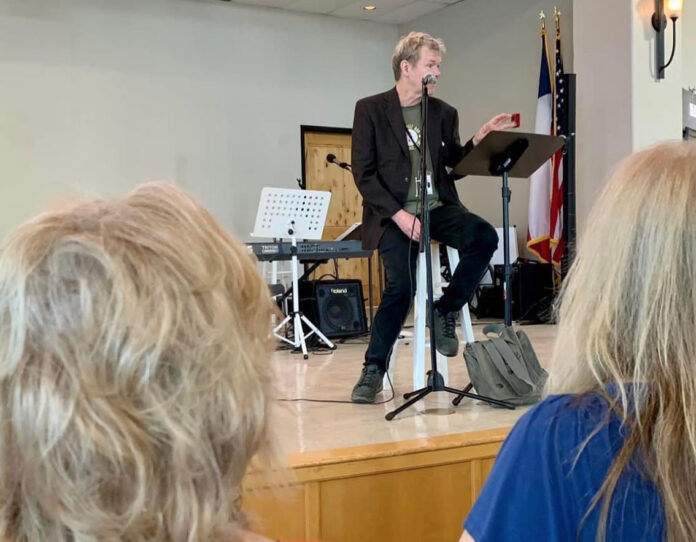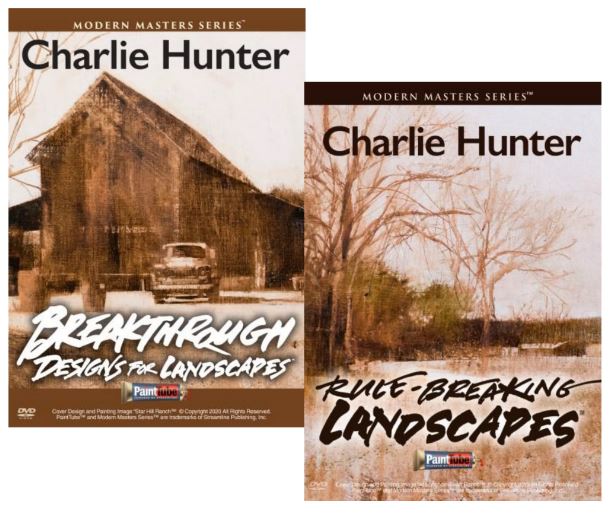By Charlie Hunter
I entered my first plein air event in 2011. From then until the pandemic, I was on the circuit. 2022 was my best season ever, netting three big prizes at three big events. I knew the emails were going to show up eventually, and they did: Would I judge at such-and-such an event?
Well, why not? After watching a lot of awards ceremonies, I’d come to believe that judges were not laying out to the audience why they really needed to buy the art.
Judges seem to fall into two categories: either they announce the winners cold – here’s the prize; here’s the painting; or they give a bit of explanation of their choice as they announce the prize. Of the two, I much prefer the latter.
But even then, usually the judge directs their remarks to those who understand the mechanics of painting: the competition painters and those in the audience who are painters themselves. However, that crowd is not really the target buying audience.
The target buying audience is the folks who have bought (or have been corralled into buying) tickets to the gala. They’ve got the wherewithal to buy art, but they’re not regular art buyers. They may not think they particularly need original art in their house.
The gala is the preeminent sales opportunity at plein air events. Tasty hors d’oeuvres, free drinks, and a limited-time window is a great combo. The audience is pampered to feel that they’re getting a sneak preview of the good stuff, that they’re the tastemakers of the town.
Some buy tickets because they fervently believe in the mission of the organization; a few do so to look like they’re hotshots. But for a lot of attendees, it’s a complex, but fairly mundane web of small-town politics and quid-pro-quo obligations – you bought tickets to the Rotary Auction, therefore I’ll buy tickets to the Arts Gala.
That audience doesn’t really spend much, if any, of their adult lives thinking about art. They’re not hostile to art; it just isn’t the focus of their lives. How does an event turn them into buyers? Not buyers who are asking themselves a week later, “Why’d I buy that?” But instead, buyers who think, “I can’t wait for next year.”
The judge at an event has enormous power to educate the audience – not just about what makes for “good art” (hard to teach in a 20-minute talk!) – but why to start buying art that night. The judge needs to make an entertaining, convincing case of why you – yes, you – need to buy a painting. Right now.

I used to be a manager of singer/songwriters. They supported themselves by constant touring, playing festivals and small clubs, selling CDs out of the backs of the van… a tough way to make a living, but satisfying, not unlike the lives of itinerant plein air painters.
One of the musicians I managed was Fred Eaglesmith. Fred’s band was one of the best in the business in the early aughts – they played hard, dark country-tinged ballads and rockers about farm foreclosures and maybe suicides, drunken losers ranting that they had seven shells in their six-gun … and in between the songs, Fred would work the audience like a master. He was a Canadian farm boy raised in a fundamentalist sect, with the rhythms of a gospel preacher in the cadence of his speech. And he was funny. “I wrote this song as a therapeutic measure,” he’d say. “In Alberta, they think a therapeutic measure is something you weigh cattle with.” He’d make the audience feel like he was their friend; then he’d turn and nail their hearts to the wall with the beauty of one of his songs.
Fred was never boring. Audiences would shut up just because they couldn’t guess what he was going to say next. It might be funny; it might be outrageous, it might be extremely sincere. It would be smart, but beyond that, who knew?
I try to channel Fred Eaglesmith when I give a judge’s talk, thinking, how do I engage the audience? Here’s how I’ve gone about it:
Get the audience’s attention. I like to start with a carnival barker barrage about how the tension is so prevalent in the room that you could cut it with a knife. Gather ‘round, ladies and gentlemen … this is it, the big game, the grudge match, the clash of the titans. It isn’t, of course – that’s the joke. The artists may have some tension, but to the layperson, there are a bunch of essentially interchangeable painters with a bunch of essentially interchangeable paintings. They know prizes will be given, but it’s like watching a sporting event for a game where one doesn’t know the rules; context is needed.
Explain the rules of the game. Why do these awards matter? The audience needs to relate. The artists are small business people; the attendees are small business people as well. They look at the artists a little bit differently when they understand that these are folks who don’t survive on grants, whose paintings aren’t purchased by museums, who are taking a big chance; coming to paint for a week on spec.
Artists are attracted to plein air events by three things, and we talk about them to one another:
1. A well-run event.
2. Substantial prizes.
3. Good sales.
An event can survive with any two, but a top event has all three. And the third is the most important, and that is the part that nobody but the audience present has control over.
I explain that I’m looking for paintings that have an identifiable voice, paintings that, to quote Richard Schmid, “show you what the world feels like to someone else.” Awards are important resume-builders, therefore I’m probably not going to give multiple prizes to one individual. And importantly, most of the best art on the walls isn’t going to win a prize; awards are essentially arbitrary, and the viewer should trust their gut, and look for paintings that move them.

Explain how buying art helps the buyer. Owning an original piece of art, where you can see the actual hand of the artist at work is far more satisfying than looking at a photograph or a print.
But how to choose? Three criteria to consider:
a) It captures a moment in time. When I judged Mountain Maryland Plein Air this year, the streets of downtown Cumberland were being massively rebuilt. Traffic cones and perimeter fencing were everywhere. Ten years from now, buyers will be able to say, “Yup, that had to have been 2023!”
b) It depicts a place that resonates. We all feel the tug a particular spot may hold for us. How amazing, then, to be able to see that spot through someone else’s eyes!
c) It’s just beautiful. The great thing about art is you don’t have to like it. And if you do like it, you don’t have to over-analyze it. It doesn’t matter if you don’t understand the theory behind a painting; if it looks beautiful to you, trust yourself.
Explain how buying art helps the town. Arts don’t drive the economy of most towns, but they play a huge role in a town’s survival. A healthy arts scene adds to the quality of life. Do you want a place that young people want to live in? Do you want good word-of-mouth to attract the best artists? Buy a painting. Artists talk amongst each other, and word gets out fast if sales are strong.
Explain the awards. Attendees are thrilled to learn how the eye moves through a piece, to have pointed out a particularly interesting decision an artist made, to hear why this painting is, indeed, the best use of light of any in the show, this one the best architecture…
I tell folks to call me over after the talk, and I’ll give them the CliffsNotes version of how a painting they are considering works. If they memorize the spiel, I tell them, they can impress their friends.
“As you made the case to the audience related to ‘Why Buy Art,’ we could see the spark of recognition among people who enjoy this art but may not typically buy,” Pat Hilton and Donna Miller of Mountain Maryland recently wrote me. “We noticed purchases among those who claim year after year that they have no remaining wall space. And sales increased substantially. This year’s gross sales were up about 50%!”
It’s important not to talk down to people; I try to approach it like a friend offering to share a bit of somewhat specialized, but ultimately practical, knowledge – like how useful it is when somebody shows the best way to coil extension cords …
And make it entertaining.
Connect with Charlie Hunter at www.hunter-studio.com.
For Artists: Get over seven hours of instruction with Charlie Hunter’s art workshop combo, “Breakthrough Designs for Landscapes” and “Rule-Breaking Landscapes,” available here!
And browse more free articles here at OutdoorPainter.com






What an articulate young man. And very tidy.
Thank you, Charlie. You are dead on with this. I’ll try to do better, be more inclusive, and tell better stories when I judge events in the future. It is a big honor and responsibility for sure.
This is one of the best “how to judge and boost an art show”, I have ever read! Kudos Charlie! Well done!